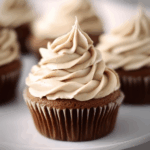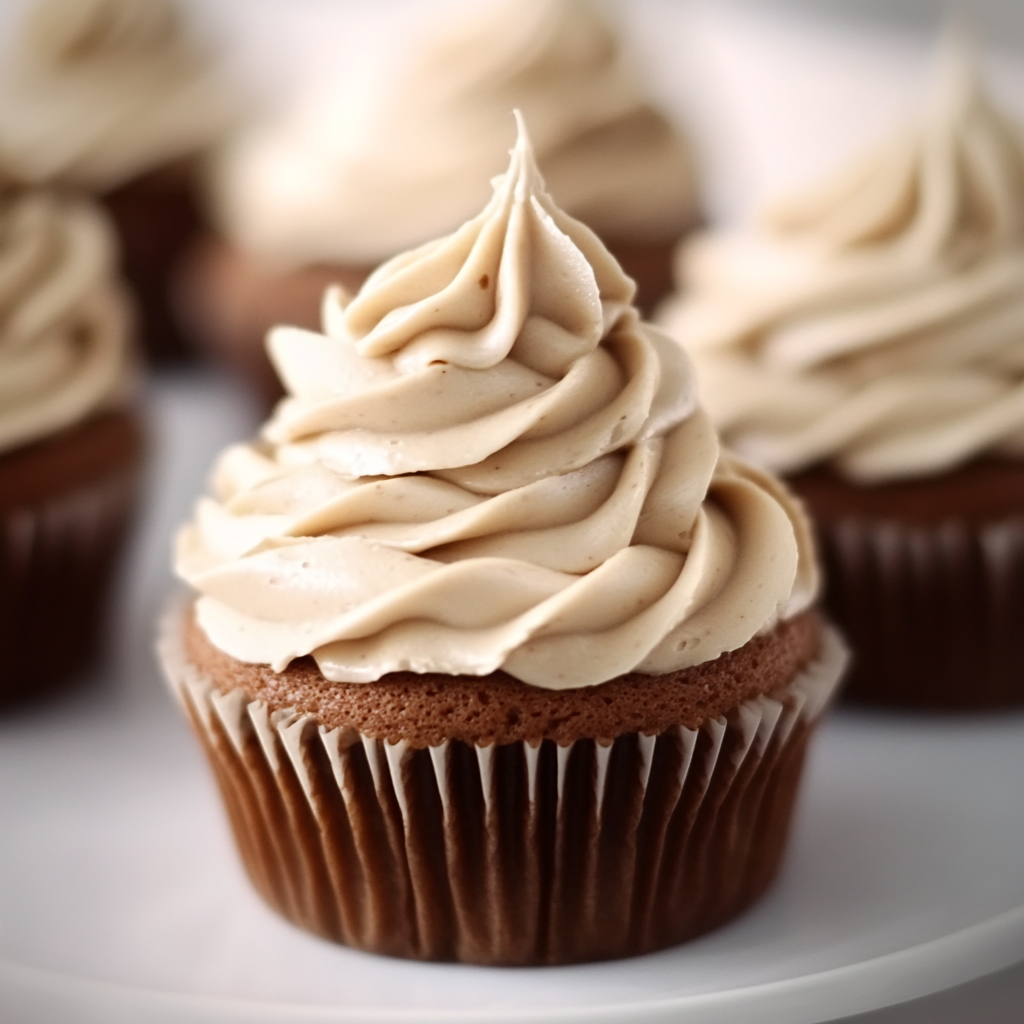Russian buttercream is a unique frosting made from a combination of butter and sweetened condensed milk. Unlike traditional buttercream, which is made using powdered sugar and butter, Russian buttercream is incredibly smooth and has a melt-in-your-mouth quality. The condensed milk adds a subtle sweetness and creaminess that sets it apart from other frosting types. This buttercream is often used to decorate cakes, cupcakes, and cookies, and its delightful flavor pairs well with a variety of cake flavors.
Why Choose Russian Buttercream?
1. Silky Texture
One of the standout features of Russian buttercream is its silky and creamy texture. The combination of butter and sweetened condensed milk results in a frosting that spreads easily and holds its shape beautifully. Whether you’re frosting a multi-layer cake or piping decorative swirls on cupcakes, Russian buttercream glides on effortlessly.
2. Less Sweetness
If you find traditional buttercreams too sweet, Russian buttercream might be the perfect solution. The use of sweetened condensed milk provides sweetness without the overwhelming sugary taste found in conventional frosting. This allows the flavors of your cake to shine through while still providing a deliciously creamy topping.
3. Versatile Flavoring Options
Russian buttercream is highly adaptable, allowing you to experiment with various flavorings to suit your preferences. You can enhance its flavor by adding vanilla extract, cocoa powder, fruit purees, or even flavored extracts like almond or hazelnut. The possibilities are endless, making it easy to customize your frosting for different occasions.
Ingredients
- 1 cup unsalted butter (softened to room temperature)
- 1 can (14 oz) sweetened condensed milk
- 1 teaspoon vanilla extract (or any other flavoring of your choice)
- Pinch of salt (optional, to balance sweetness)
Instructions
- Beat the Butter: In a large mixing bowl, use an electric mixer to beat the softened butter on medium speed until it becomes light and fluffy (about 2-3 minutes).
- Add the Sweetened Condensed Milk: Gradually add the sweetened condensed milk to the butter, mixing on low speed. Scrape down the sides of the bowl as needed. Continue mixing until the mixture is smooth and well combined (about 3-4 minutes).
- Flavor It: Add the vanilla extract (or your preferred flavoring) and a pinch of salt if desired. Mix until fully incorporated.
- Chill (Optional): If the buttercream is too soft for your liking, you can chill it in the refrigerator for about 30 minutes to firm it up before using.
- Frost Your Baked Goods: Use the Russian buttercream to frost your cakes, cupcakes, or cookies. Enjoy the decadent flavor and silky texture!
Conclusion
Russian buttercream is a delightful and versatile frosting that will elevate your baking to new heights. Its creamy texture and balanced sweetness make it an excellent choice for any dessert. Whether you’re celebrating a birthday, wedding, or any special occasion, this buttercream will impress your guests and satisfy their sweet tooth. Give this recipe a try, and you’ll discover why Russian buttercream is quickly becoming a favorite among bakers around the world.
Serving and Storage Tips for Russian Buttercream
Once you’ve crafted your delicious Russian buttercream, knowing how to serve and store it can help you get the most out of this delightful frosting. Here are some essential tips to ensure your buttercream remains fresh, flavorful, and ready for your baking creations.
Serving Tips
- Temperature Matters: For the best flavor and texture, allow your frosted cakes or cupcakes to sit at room temperature for about 30 minutes before serving. This helps the Russian buttercream soften slightly, enhancing its creamy mouthfeel.
- Portion Control: When serving, consider the size of your portions. Russian buttercream is rich and creamy, so smaller servings often suffice. Pairing a cupcake with a cup of coffee or tea makes for a delightful dessert experience.
- Garnishing: Elevate the presentation of your frosted treats by adding simple garnishes. Fresh fruit, chocolate shavings, or edible flowers can complement the rich texture of the buttercream while adding a touch of elegance.
- Piping Techniques: If you’re decorating with Russian buttercream, use various piping tips to create beautiful designs. The smooth texture of the buttercream allows for intricate decorations, from rosettes to swirls.
Storage Tips
- Room Temperature Storage: If your frosted cake or cupcakes will be consumed within 1-2 days, you can store them at room temperature. Keep them covered with a cake dome or plastic wrap to protect them from air exposure.
- Refrigeration: For longer storage, refrigerate your frosted treats. Place them in an airtight container or cover them tightly with plastic wrap. Russian buttercream can typically last in the fridge for up to one week.
- Freezing: If you have leftover Russian buttercream, you can freeze it for later use. Place the buttercream in an airtight container or a resealable plastic bag, removing as much air as possible. It can be frozen for up to three months. When ready to use, thaw it in the refrigerator overnight, then rewhip it briefly to restore its texture.
- Frosting Storage: If you have extra unfrosted Russian buttercream, store it in the refrigerator in an airtight container. When you’re ready to use it, allow it to come to room temperature, then re-whip it for a smooth consistency.
By following these serving and storage tips, you can enjoy your Russian buttercream at its best, ensuring that every bite is as delicious as the first!
1. What is the difference between Russian buttercream and traditional buttercream?
Russian buttercream is made with a combination of unsalted butter and sweetened condensed milk, resulting in a silkier and less sweet frosting compared to traditional buttercream, which typically uses powdered sugar and butter. This gives Russian buttercream a unique creamy texture and a more subtle sweetness, making it a favorite for those who find traditional buttercream too sweet.
2. Can I flavor Russian buttercream?
Absolutely! Russian buttercream is versatile and can be flavored in various ways. Common flavorings include vanilla extract, cocoa powder for a chocolate version, fruit purees like strawberry or raspberry, or even flavored extracts such as almond or hazelnut. Feel free to experiment with different flavors to suit your taste preferences.
3. How should I store leftover Russian buttercream?
Leftover Russian buttercream can be stored in the refrigerator for up to one week in an airtight container. For longer storage, you can freeze it for up to three months. When you’re ready to use the frozen buttercream, thaw it in the refrigerator overnight, then rewhip it briefly to restore its creamy texture.
4. Can I use Russian buttercream for piping decorations?
Yes, Russian buttercream is excellent for piping! Its smooth and creamy consistency allows for easy application and beautiful designs. You can use various piping tips to create decorations like rosettes, swirls, and intricate patterns. Just ensure the buttercream is at the right consistency—soft but not too runny—for the best results.
Print
Russian Buttercream
- Yield: Covers an 8-inch layer cake or 24 cupcakes 1x
- Category: Dessert
- Method: No-Bake
- Cuisine: Russian
Description
Russian Buttercream is a smooth, creamy frosting made with just two main ingredients: butter and sweetened condensed milk. Known for its rich flavor and easy preparation, it’s perfect for frosting cakes, cupcakes, or as a filling for desserts.
Ingredients
- 1 cup unsalted butter, softened to room temperature
- 1 can (14 oz) sweetened condensed milk
- 1 teaspoon vanilla extract (optional, for added flavor)
- Pinch of salt (optional, to balance sweetness)
Instructions
-
Beat the Butter:
- In a large mixing bowl, beat the softened butter on medium-high speed with an electric mixer until pale, fluffy, and creamy, about 5-7 minutes. Scrape down the sides of the bowl occasionally.
-
Add Sweetened Condensed Milk:
- With the mixer on low, gradually pour in the sweetened condensed milk. Continue beating until fully incorporated and smooth, about 3-5 minutes.
-
Add Vanilla and Salt (optional):
- Beat in the vanilla extract and a pinch of salt, if using, until well blended.
-
Check Consistency:
- If the buttercream appears too soft, place it in the fridge for 10-15 minutes, then beat again briefly to reach a smooth consistency.
Notes
- Storage: Store Russian Buttercream in an airtight container in the fridge for up to 1 week. Re-whip before using to restore its creamy texture.
- Freezing: Russian Buttercream can be frozen for up to 3 months. Thaw in the refrigerator overnight and beat again before use.
- Consistency Tip: If your buttercream is too soft, it may be due to the room temperature or overly warm butter. Chill slightly and re-whip if necessary.

